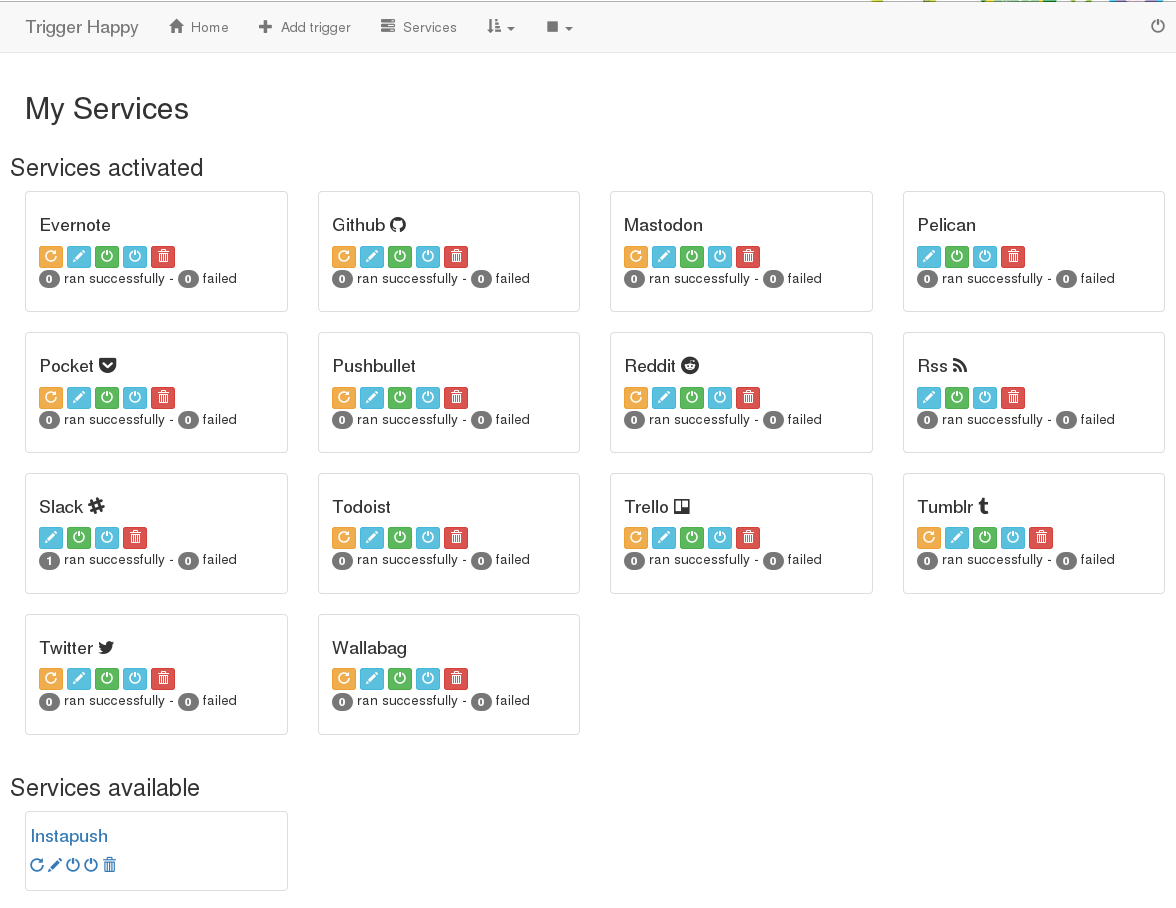Quickstart¶
Requirements:
- Python 3.6
- Redis
for installing redis, on Linux,
apt-get install redis
or
yum install redis
for installing redis on macosx:
brew install redis
Create a virtualenv¶
We just create a virtualenv with python 3.6 (or 3.5)
python3.6 -m venv myproject
cd $_
source bin/activate
Install from GitHub¶
We install Trigger-Happy from Pypi
git clone https://github.com/push-things/django-th.git
cd django-th
pip install -e .
Database¶
python manage.py migrate
python manage.py createsuperuser
Load the initial services:
python manage.py loaddata initial_services
Start the application¶
python manage.py runserver &
Now open your browser and go to http://127.0.0.1:8000/th/ to start using the application by logged in
Activating the service¶
Go to activate the (at least) 2 services you plan to use:
“Activated services” (http://127.0.0.1:8000/th/service/):

1rst Service
- Select Rss and validate
2nd Service
- Select Wallabag and fill the fields that are required with the parameters, can find in then page http://your-wallabag-instance/developer and validate
Create a trigger: in 5 steps¶
Once all of this is done, go back to the main page http://127.0.0.1:8000/th/ and create your first trigger
- Step One:
Select Rss
- Step 2:
enter the RSS URL that provide the data you want to grab
- Step 3:
Select Wallabag
- Step 4:
Set a tag (if you need)
- Step 5:
Set a description that will be displayed in the list of your triggers
Turn the engine on:¶
Now that everything is setup, you can run the following commands:
python manage.py read
python manage.py publish
the first one, will read of the triggers that are enabled (with the blue “on/off” switch), and will download the data related to each of them, and will put them in the cache (available with Redis)
The second one, will read the data from the cache, and will publish them on Wallabag.
Once all of this is ok, you could automate this commands with Crontab later
Have Fun, and happy automation ;-)
